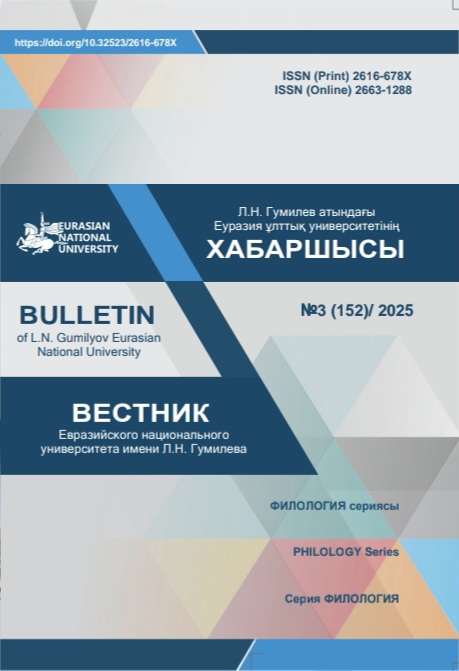The cognitive aspect of rhetorical figures in the works of Kazakh orators
Views: 161 / PDF downloads: 74
DOI:
https://doi.org/10.32523/2616-678X-2025-152-3-156-166Keywords:
rhetorical figures, parallelism, inversion, oratory speech, cognitionAbstract
This article examines the role and significance of rhetorical figures in the works of Kazakh orators across various contexts, highlighting their connection to Kazakh linguistic cognition, which developed alongside and was shaped by national consciousness. It demonstrates that rhetorical devices serve as essential tools for education, moral upbringing, and the formation of a proper worldview. Particular attention is given to the orators’ use of persuasive strategies, including parallelism, rhetorical questions, and inversion, employed both individually and in combination to create rhetorical effect. Seven types of parallelism are identified and analyzed, revealing their distinctive features and diverse applications in Kazakh oratory. The study shows how repetition, pairwise comparison, and emphasis on different qualities can produce complex and holistic expressions of thought. Furthermore, the article situates Kazakh oratory within the broader field of global linguistics, reviewing scholarly perspectives on the terminology and methods of constructing rhetorical figures. Through specific examples, it explores the cognitive dimensions of rhetorical usage in Kazakh oratory and offers relevant conclusions.







